Economy
Pre-war
Before the war, Tennessee was among the top producers of cotton, tobacco, corn, wheat, pigs, and sheep in the country. Iron, timber, and liquor were also important industries.
While possessing some industry, Tennessee remained a state dominated by agriculture. The Civil War brought drastic changes to the state’s economy.
The eastern section of Tennessee held large reserves of timber, coal and iron. Chattanooga was home to furniture factories, iron furnaces, and sawmills to take advantage of these reserves.
Nashville, in Middle Tennessee, had paper mills, gristmills for corn and other grains, and iron stove factories. In 1860, Nashville was home to more than 70 manufacturers. They employed more than 1,000 workers in industries such as leathery, brewing, cabinet making, and publishing.
Memphis and the Highland Rim in western Tennessee had large cottonseed processors, flourmills, and iron production.
Tennessee was also leading producer of military arms and equipment in the south, along with being a major manufacturer of locomotives and other train cars for railroads.
Wartime economy
The destruction caused by the Civil War greatly impacted economic growth in Tennessee. Military confiscation of crops and livestock caused businesses and farms to decline rapidly.
Some plantations were abandoned by both owner and slaves. With fewer factories and farms in operation, many Tennesseans were jobless and faced widespread poverty.
As the state’s economy weakened, wartime inflation increased significantly. Prices for everyday items soared, trade slowed, supplies were low, and crime was rampant. For example, the price of coffee rose 700 percent, sugar 600 percent, and salt an amazing 1,400 percent.
As farmers suffered from low agricultural prices, labor conflicts were also widespread. Trade lessened in Memphis as bandits attacked travelers from rural areas. Perhaps, the most profound change however, was that fact that Tennessee could no longer depend on slave labor.
Picture Credits:
- Photograph of men repairing railroad after Battle of Stones River, near Murfreesboro, 1863. Library of Congress
- Photograph of men with the Quartermaster's Department building a transport steamer on the Tennessee River near Chattanooga in 1864. National Archives
- Photograph of the railroad station at Nashville with the State Capitol on a hill in the background. Notice the Union tents next to the station. Library of Congress
- Photograph of U.S. Military Railroad engine No. 137 built in 1864 in the rail yards in Chattanooga. Notice the troops lined up on the right side of the photograph. National Archives
- Photographic print of the Nashville wharf in December 1862 with steamboats lined up. Notice the goods on the dock at the left waiting to be loaded on the boats. Tennessee State Museum Collection, 10.135
- Photograph of Nashville street in 1864 showing the Maxwell House Hotel. The hotel which had not been finished before the war began was confiscated by the Union Army and used as a barracks and later as a prison hospital. Tennessee State Museum Collection, 94.107. For more information about the hotel, click here.
Civil War and Reconstruction >> Civil War >> Life At Home >> Economy
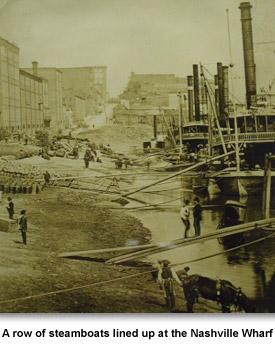
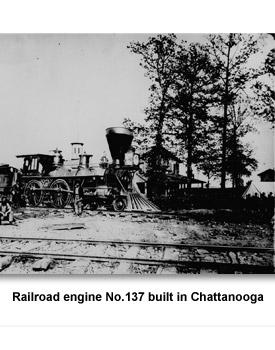
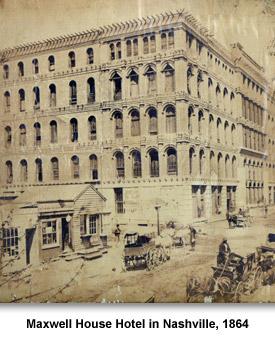
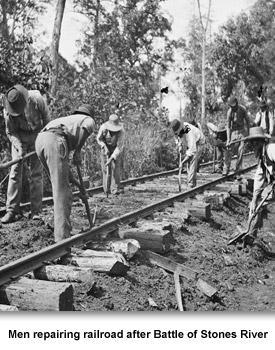
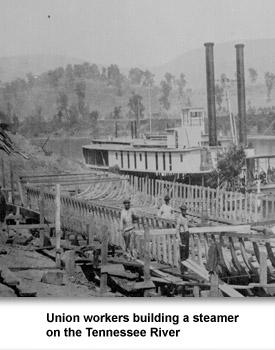
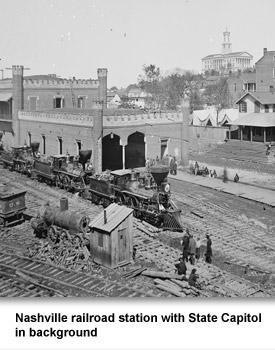
 Sponsored by: National Endowment for the Humanities
Sponsored by: National Endowment for the Humanities